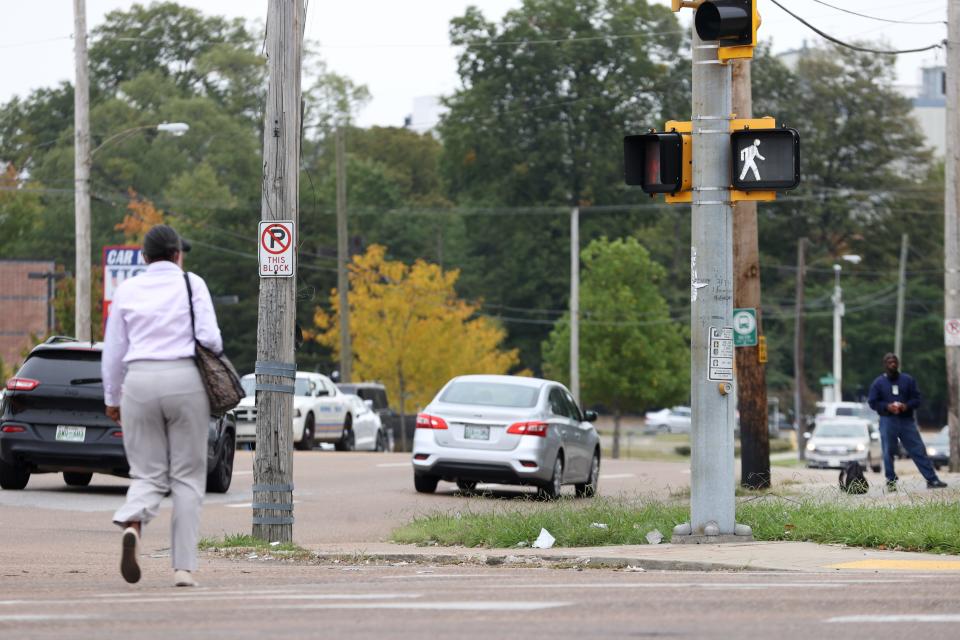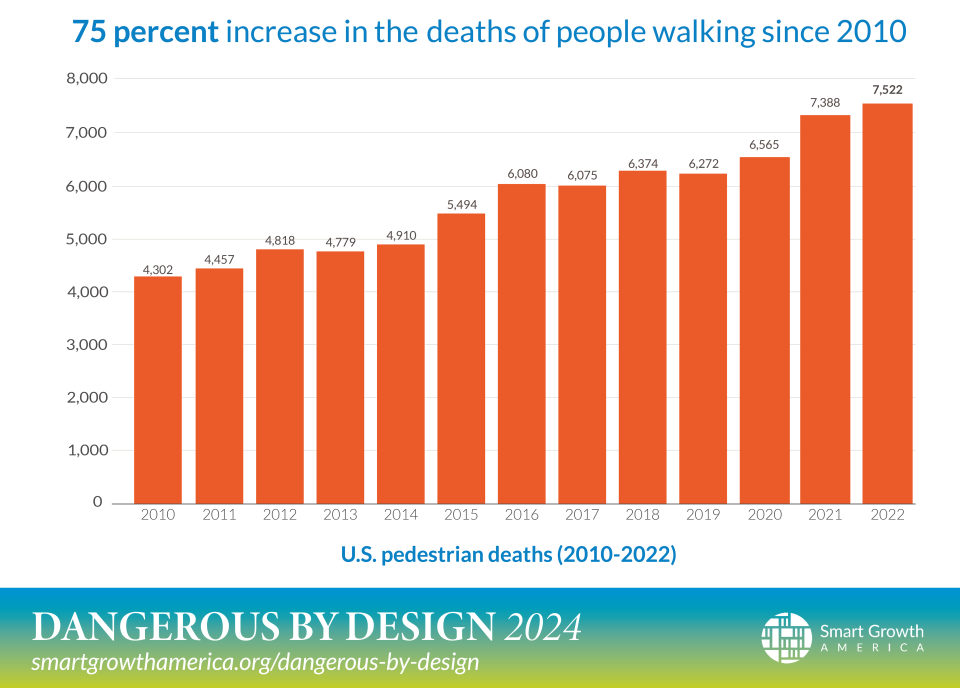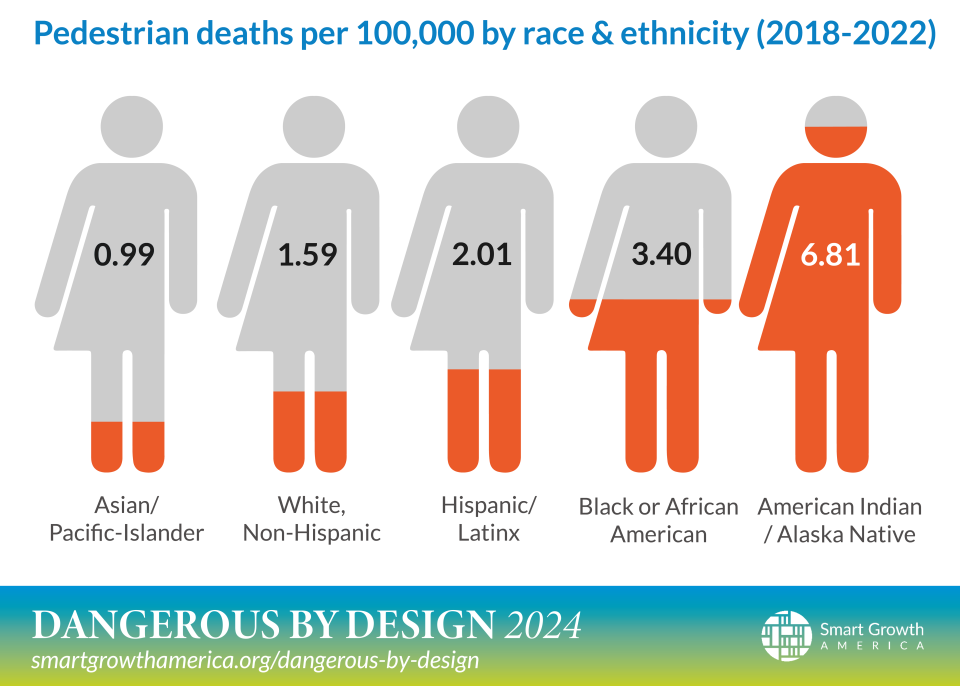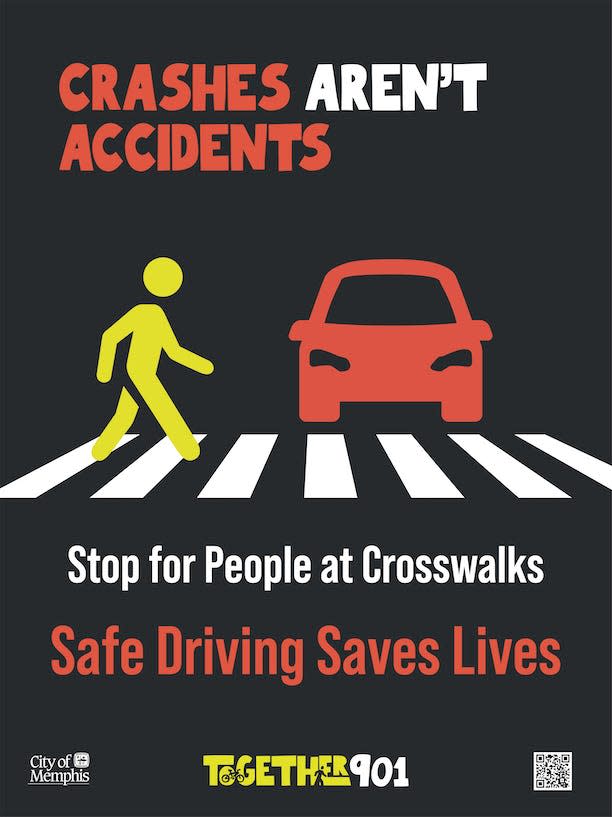

Mark Cohn, the American singer and songwriter, romanticized in song the experience of being a pedestrian in Memphis. Pedestrians are not putting on their”blue-suede shoes” to walk down Beale Street. Instead, they are relegated to walking along poorly designed, high-speed streets with little infrastructure to protect them, according to recently released data.
Cohn presents a very idyllic walking experience, but the life of a pedestrian is far more treacherous.
Memphis is named #1 most deadly metro area for pedestrian fatalities
In a report released by Smart Growth America, Memphis has been named the most dangerous city for pedestrians out of the top 101 largest metro areas in the United States.
Smart Growth America is a national organization aimed at improving communities through climate change and resilience, advancing racial equity, and creating healthy communities. Using metrics gathered from the Fatality Analysis Reporting System from the National Highway Traffic Safety Administration, Smart Growth America ranked metro areas based on pedestrian deaths per 100,000 residents.
According to the report, Dangerous by Design, in Memphis, 343 pedestrians have died from 2018-22, giving the city an average pedestrian fatality rate of 5.1 deaths per 100,000 people over the past five years.
Why are Memphis, US roads so dangerous?
In many cities across the U.S., highway designs have been applied to arterial roads in complex urban areas. These arterial roads make up 13% of roads in the U.S. but are responsible for 59% of pedestrian deaths.
Most of these roads are state roads and programs such as the Pedestrian Road Safety Initiative have been put in place to improve the startling rates of pedestrian fatalities.
Inherently, these high-speed designs are unsafe for pedestrians and drivers, as drivers “will have no ability within the physics of your automobile and the speed” to react to dangerous, possibly deadly roadway scenarios, according to Beth Osborne, vice president of transportation of thriving communities with Smart Growth America.
Commercial corridors in Memphis, Union, Summer, Lamar, and Shelby drives, consist of multiple wide, high-speed lanes, with little infrastructure that encourages drivers to slow down or pay attention to their surroundings. These arterial roads lack consistent, clear crosswalks yet they are filled with activities and resources that attract pedestrians.
More: MPD: Three of five deadliest intersections so far this year are in South Memphis
Related: MPD: Three of five deadliest intersections so far this year are in South Memphis

A statement released by Smart Growth America said, “Roads are often designed to prioritize speed for vehicles rather than safety. Crosswalks are regularly missing or too far apart, intersections are difficult to cross on foot, and many turn lanes encourage going around corners quickly, which can pose a hazard. Many places people regularly walk have zero sidewalks.”
A crisis of epidemic proportions
Pedestrian fatality rates have risen across the country, not just in Memphis.
In the most recent year with complete federal data, 2022, 7,522 people were killed nationwide, marking a 40-year high for pedestrian deaths. For reference, 7,522 deaths are roughly equivalent to more than three full Boeing 737s falling from the sky every month for a year.

According to the Dangerous by Design report, “This epidemic continues to grow worse because our nation’s streets are dangerous by design, designed primarily to move cars quickly at the expense of keeping everyone safe.”
Who is most at risk?
Those who are most vulnerable are those people who lack the protection of a vehicle. Crashes occurring at the legal speed limit, 40 to 45 miles per hour, almost guarantee a fatal or near-deadly result.
Vulnerable communities, most notably people in low-income and minority communities, people between the ages of 50 and 65, and people over the age of 75 are far more likely to be struck and killed by cars.
“People of color, particularly American Indian and Alaska Native populations are far more likely to die while walking than any other ethnic group,” according to the Dangerous by Design report.
Black Americans are killed at double the rate of white Americans.

What does this mean for Memphis?
The epidemic of pedestrian fatalities in Memphis has been ongoing for some time. Many busy high-speed roads in Memphis lack clear, frequent crosswalks or even functional sidewalks. Those without access to reliable transportation can only functionally travel on roads that were designed for automobile travel.
In 2022, Richard Meeks, a beloved zookeeper in the giraffe exhibit at the Memphis Zoo, died of his injuries after a hit-and-run incident.
In 2023, Memphis leaders launched a public safety campaign, SafeStreets901, to educate the public about safe driving practices, notably shifting their language from victim blaming to urging drivers to abide by the rules of the road.

More: City of Memphis launches ‘Getting there Together,’ seeking to decrease pedestrian fatalities
Jackson McNeil, the transportation and mobility director with Innovate Memphis, believes a great way to reduce the pedestrian fatality rate is to build empathy within our community.
Innovate Memphis is a local non-profit that aims to solve numerous civic problems in the city by advocating for change initiatives alongside government, nonprofit, and philanthropic partners and implementing evidence-based solutions.
Memphis is designed for automobile transportation, yet out of the 250,000 households in Memphis, 27,000 do not have access to a vehicle, according to the most recent Census Bureau data (2022). This lack of vehicle access only exacerbates the pedestrian fatality crisis.
Reform efforts, such as those in Buffalo, New York, have been proven to reduce pedestrian fatalities significantly. By targeting problematic areas such as intersections on Main Street/Humboldt Parkway/Kensington Avenue and adding speed humps in various neighborhoods, Buffalo has seen a 50% decrease in fatalities since 2018 after implementing their “Slow Streets” Program.
Greater awareness and education surrounding proven beneficial infrastructure improvements will allow the Memphis community to champion positive changes, therefore reducing the rate of pedestrian fatality.
In a society that is built for automobiles, pedestrian fatalities have been counted as “part of the cost.” Smart Growth America aims to break this stigma and reform the way our roads are designed.
Nell Rainer is a news intern with The Commercial Appeal. She can be reached at Nell.Rainer@commercialappeal.com and followed on X, formerly known as Twitter,@NellRainer96433.
This article originally appeared on Memphis Commercial Appeal: Smart Growth America names Memphis most dangerous city for pedestrians
EMEA Tribune is not involved in this news article, it is taken from our partners and or from the News Agencies. Copyright and Credit go to the News Agencies, email news@emeatribune.com Follow our WhatsApp verified Channel









